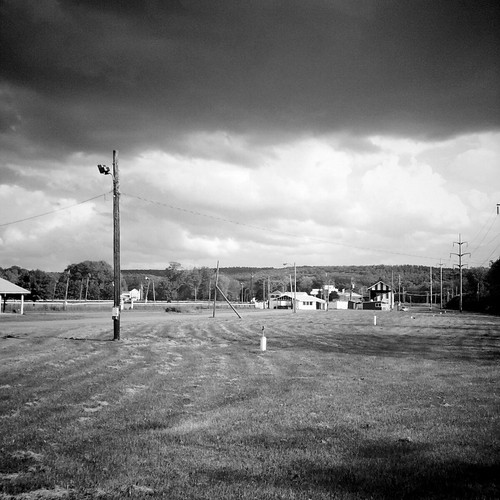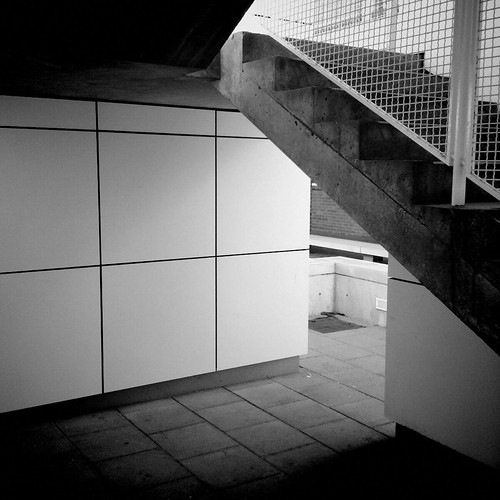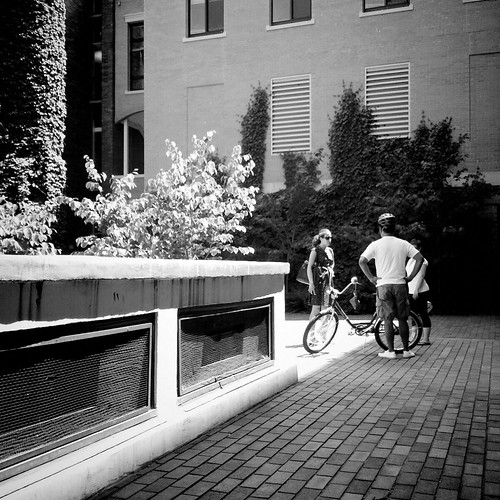skip to main |
skip to sidebar

After seeing the flurry of activity on Twitter about a kickstarter project designed to hold your lens cap on your strap, I was rather surprised that so many photographers feel like they need a "solution" for their lens cap. Here's what I do:
When I pull my camera out, I take the lens cap off with my left hand and stick it in my back pocket. There it stays until I'm done shooting or want to switch lenses. Cap goes back on, and lens goes back in the bag. Most lens caps are pretty durable, so sitting on them isn't an issue. Since I've conditioned myself to always put the cap in my pocket, I never have to scramble around trying to find it. I noticed condensation on the cap from my body heat/moisture sometimes - simple solution is to put it in my pocket so that the "front" of the cap (the side that goes away from the lens) is facing my backside. That way any condensation will happen there and won't get on the lens when I cap it back up.
What do you do with your lens caps? Do you use a strap or some sort of system to keep track of them while shooting?
~S
[title of blog] on flickr

photo: Corey / Martin
Last night I was browsing through photos in the Wedding Photography group on Flickr when I came across the above portrait. I clicked through to see it larger and was struck by the connection of the subject to the camera. The depth of field is pleasingly shallow without being so razor thin that half her face is out of focus. The lighting is soft yet directional. I would be proud to have taken that shot, which is generally how I measure other people's photography.
Then I glanced over at the exif and couldn't quite believe what I read. I clicked the link and examined it in detail. This was taken with a Canon Rebel T2i (a basic consumer DSLR) and the 18-55 kit lens. A closer analysis of the lighting suggests that she was standing near a window, no flashes or fancy studio tricks.
That's right, an entry level camera with kit lens and a window were all that the photographer needed to make this great portrait.
edit: I'm not 100% sure about the window light anymore, I did some looking through the photographer's stream and he shoots about 50/50 available light/flash. Even if it was a strobe in a softbox, though, you could get the same effect with a window.
It's easy to play the "if only I had this (lens/camera/flash/accessory) I would be a better photographer" game. Heck, I'm guilty, and have been fighting serious gear lust lately. Would I shoot a wedding with a Rebel and a kit lens? Probably not. (There's a reason that the pro's use professional gear.) Am I inspired to take my photos to a new level using only the gear I have? You bet.
What's your excuse?
~S
[title of blog] on flickr

© Simon Hucko 2011
After declaring that I wasn't going to renew my pro account on Flickr, I had a few conversations with various people about the merits of Flickr in general and if it was worth seeking out a new community to share photos. The common criticisms I see of Flickr are that people post too many mediocre photos (lack of editing) and the relatively worthless comments that people give ("nice shot" "great capture" etc etc). I agree whole heartedly with these complaints, but I've found that there are a few tricks to having a more interactive, constructive experience on Flickr.
First off, how you approach Flickr largely depends on what you're aiming to get out of it. Some people use Flickr as a way to share photos with family and friends. Nothing wrong with that, but everything I say below probably doesn't apply to you. Others use Flickr as a way to get their 15 minutes of fame, and go the extra mile to get as many contacts, comments, views and faves as possible. Again, if that's your thing, nothing wrong with that, but you're probably not concerned with the quality of photos and feedback that you see on the site. I know people who are looking for a place to make some close friends and use Flickr as much for the social aspect as for the photography. A lot of what I say may still apply to you, but who your contacts are will depend on other factors. In any case, you can always create another free account and use it as your "portfolio"/critique account.
Dealing with a lack of editing is really an issue of who you make a contact. The first thing you should do if you haven't already done it is change your preferences to only display 1 photo per contact on your home page (instead of 5). Now you get to see the latest offering from 10 people instead of potentially only 2. Every so often, go through your contact list and get rid of people who you regularly skip over when you see new photos from them. Flickr doesn't notify people when you de-contact them, so there's a pretty good chance they'll never even know. I also am pretty picky about who I add as a contact in the first place and don't automatically "follow back" people who add me. I check out their streams to make sure there's a large percentage of images in there that I'm interested in, and to get an idea for what and how often they post. Even if they take some great photos, if it's of a subject or style I'm not really interested in I'll probably give it a pass. It sounds picky and kind of mean, but this really helps me focus in on the types of photos I'm interested in.
The next step is to be an active commenter on the people whose work you admire. If you like a photo, give it a fave and write a bit about why (not just "great shot," but "I like how the red in the background really helps the yellow subject pop.") Once people see that you a. enjoy their work and b. actually have insightful things to say about it, they'll most likely start returning the favor. Negative critique is a bit more tricky, and is something you'll probably have to build up to. Hopefully you can find a few people to trade honest feedback with this way. (Note, if you expect people to pay attention to your work, you have to limit your uploads to only your best stuff and spread out your posts to 1, maybe 2 a day.)
Another way to get relevant feedback is to put your photos in very specific groups. Follow the same principles as marketing - most people won't care about your photo, but if you find a group that focuses on your subject or location that will help add relevance and you'll get more interest from the members. For example, let's say you take a great photo of a waterfall. You could put it in a "post a cool photo" group, but most likely it'll get lost in the volume and variety of shots being posted. A quick search will lead you to the "waterfalls" group, which is made up of people who are interested in photographing waterfalls. Your photo is immediately more relevant, and your chances of getting views and comments from the group members goes way up. A bit more digging gets you to the "waterfalls of New York" group, where you happened to take your photo, and you're even more likely to get seen. Find out if you have a group for your city or area and join that. Really into close up shots of forks? There's a group for that. Also, look for a critique group. There are plenty on Flickr, some better than others. Read the description, check out the forum, and click on a few photos to see what sort of feedback people are getting. Stay away from those award groups and try to find one that really aims to give constructive critique. I haven't really explored critique groups, so I don't have a good recommendation for you. If anyone knows of some good ones feel free to leave them in the comments and I'll add them here.
So there you go, some of the tips and tricks I've picked up along the way. If you have any others I'd love to hear them, as I'm always looking to get a little more out of my Flickr experience.
~S
[title of blog] on flickr

![[title of blog]](http://1.bp.blogspot.com/_dADuhpc-QVg/TJkTQCq15KI/AAAAAAAAKtQ/usbfWPD7pjc/S1600-R/waterfall.png)








